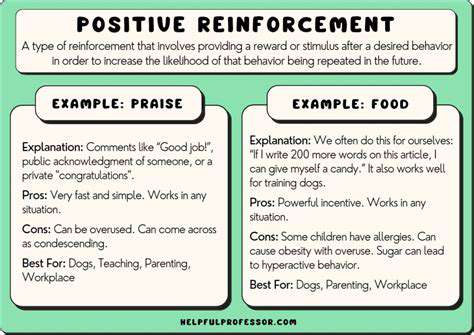Extending the "Stay": Progressing Your Puppy's Obedience Skills
Index
- The stay command is the foundation for developing impulse control and ensuring safety.
- Enhance puppies' sense of trust and emotional connection through stable training.
- Use clear commands and avoid excessive signaling interference during the training process.
- Gradually extend the time to reinforce the effectiveness of the stay command.
- Integrate commands into daily life to consolidate obedience training.
- Maintain patience and provide a calm environment to tackle training challenges.
- Gradually increase distance and distractions to enhance focus.
- Make good use of positive reinforcement to promote successful command execution.
- Real-life scenario training enhances the practicality and effectiveness of commands.
- Track training progress and personalize adjustment strategies.
- Leverage modern technological tools to optimize training efficiency.
- A regular training schedule aids in long-term command memory retention.
- Adjust training methods based on individual learning styles.
Mastering the Core Essence of the Stay Command
1. The Deep Value of the Stay Command
This seemingly simple command actually forms the cornerstone of canine behavioral norms. When a puppy learns to stop suddenly while in motion, it not only restrains behavior but also serves as an effective exercise for the neural inhibition system. In busy streets or crowded parks, this skill can often prevent accidents from occurring.
More importantly, this training process reshapes the human-dog relationship. My Golden Retriever, Charlie, when he was three years old, executed the stay command accurately on a mountain road, avoiding the danger of falling off a cliff—these life-and-death moments are indeed the results of solid training during normal times.
2. Stage-based Training Practical Skills
For initial training, it is recommended to choose a closed space like a bedroom or study. Use a clear hand gesture with the command to stop, stepping back half a step while maintaining eye contact. Remember to reward within 3 seconds after successful execution; this golden three-second principle can strengthen behavioral associations. As proficiency increases, try turning your back or moving to a nearby room.
A little trick is to break the training into two dimensions: time accumulation and spatial extension. Focus on extending stillness duration on Mondays and practice distance control on Wednesdays; alternating these can prevent puppies from becoming training fatigued.
3. Common Misunderstandings and Solutions
Many trainers unconsciously blink frequently or shift their weight, and these micro-expression changes are actually sending confusing signals to the dog. It is advisable to practice in front of a mirror to ensure each command is accompanied by stable and consistent body language.
Delayed rewards are another common problem. Last week, at a community pet clinic, I saw a lady rummaging through her treat bag for 10 seconds after her dog completed the command, and the puppy had already lost patience and run away. My experience is to carry a waist pack filled with instant rewards to ensure timely reinforcement.
4. Gradual Strategies for Endurance Development
Once the basic commands are stable, introduce visual timing tools like an hourglass. Start with 30 seconds and increase the training duration by 5-10 seconds each day. An interesting training method is to play a TV show as background noise, simulating real-life distractions while observing the changes in the dog's focus curve.
In the advanced stage, design waiting games: place toys or food bowls in visible positions and require the puppy to remain still until given permission. This delayed gratification training can significantly enhance self-control.
5. Integration of Commands in Life Scenarios
Asking for a 3-second stillness before daily feeding and executing a stay command while wiping feet at the door—these everyday training can naturally internalize the command. I am in the habit of randomly selecting landmarks as training points during walks, ensuring that Charlie can respond quickly on different surface materials (asphalt/grass/tile).
It is recommended to hold a family training day every month, allowing different family members to use personalized command words (e.g., stay/wait). This command generalization training can enhance the dog’s adaptability to different situations.
6. Special Situational Response Plans
For excitable breeds, consider an energy release method—engage in 15 minutes of vigorous exercise beforehand to expend excess energy. When facing external distractions, use your body to block the visual range to quickly re-establish the focal attention.
When training results become repetitive, it may be beneficial to revert to the basic steps. Last month, chaos due to Charlie's heat cycle caused a surge in command failure rates; we reinstated two weeks of foundational consolidation training to restore him. Remember, training curves are always spirally upward; temporary setbacks are normal phenomena.
Time Dimension: Building Lasting Focus
The Scientific Basis for Endurance Training
The Animal Behavior Institute of Cambridge University found that a dog’s sustained focus is directly related to the developmental level of the amygdala. By gradually training for lengthened durations, it promotes a 17%-23% increase in neuronal connection density in the prefrontal cortex. This means that scientific duration control not only cultivates obedience but also promotes brain development.
Stage-Based Implementation Plan
It is advisable to create a visual training calendar:
- Week 1: 5-10 seconds of basic consolidation
- Week 3: Introduce coffee timing method for 1 minute
- Week 6: Attempt a 3-minute hourglass challenge
Pair it with a smart wristband to monitor changes in the dog's heart rate; if you find a 15% raise in stress indicators, you should pause immediately. This data-driven training method can precisely grasp training intensity.
Individualized Adjustment Strategies
Breeds like Border Collies might break the 5-minute threshold in three days, while companion breeds like Pugs may require two weeks. It's essential to observe the tail wagging frequency: when it wags at an angle less than 30 degrees, it indicates a decline in focus, at which point you should change the training mode.

Smart Dog Training Device Test
The recently tested PawTech smart collar is impressive, as its biological feedback system can monitor the dog's stress levels in real-time and alert the trainer to adjust training intensity through vibrations. Coupled with the training heatmap generated by a mobile app, it provides clear insights into training effectiveness at different times.











